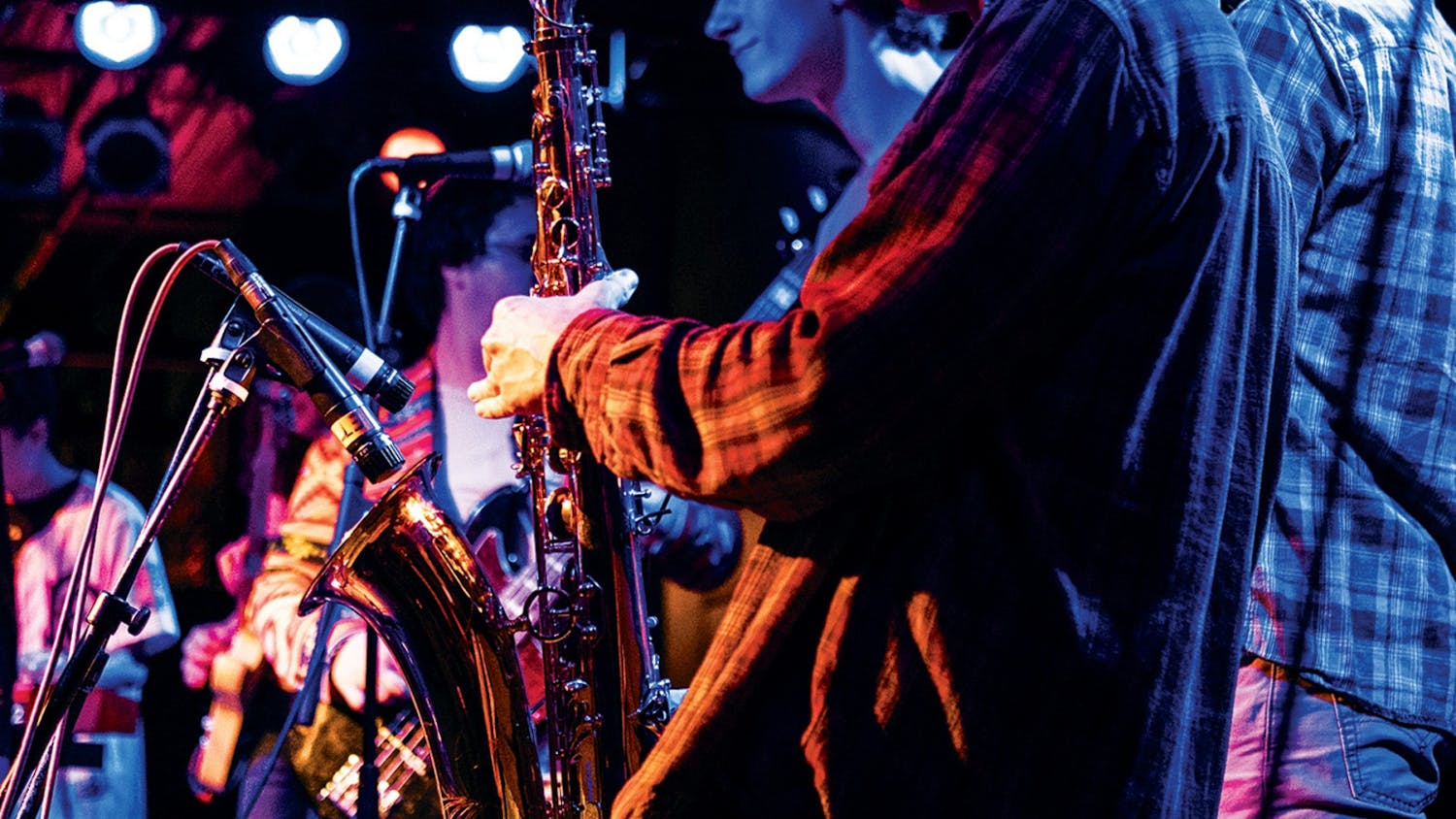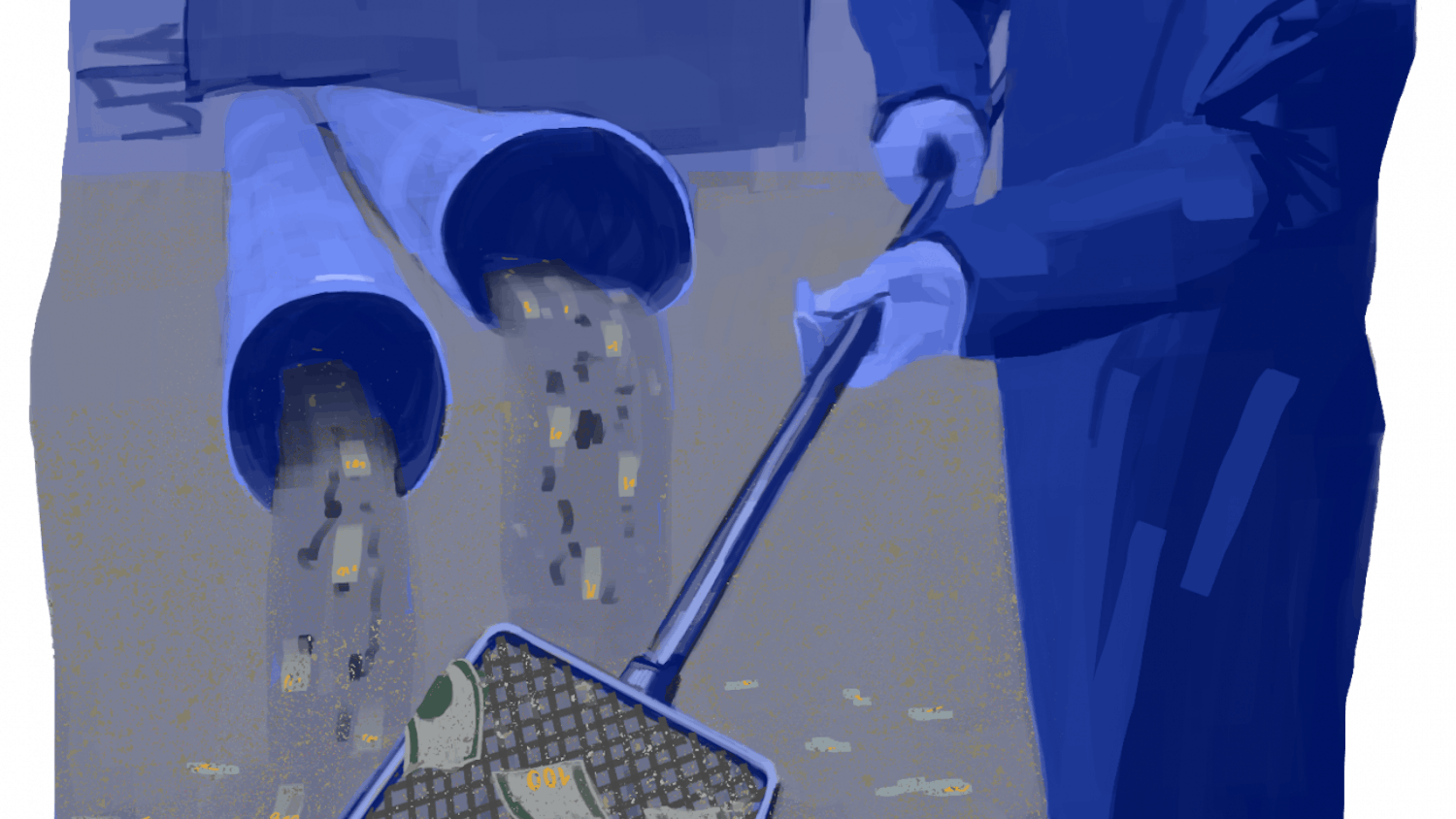Hidden away on Brook Street, far from the campus's more trafficked performance spaces, is the design studio at 50 John St., a building that has played host to many parts of the Brown and Providence communities. It is a place with both a colored interior and a colorful history.
Today, the studio houses an integral part of the Department of Theatre Arts and Performance Studies, said Michael McGarty, lecturer and scenic designer. The space is currently used as a design studio, where many theater design and architecture classes are held and where the costumes, sets, lighting and design for many of the major shows on campus are brought to life. Brown University Gilbert and Sullivan, Brown Opera Productions, Production Workshop and other groups use the space to design and build their shows, McGarty said.
In addition to being a major stop for the imagination and design of these productions, the studio is also a space for local artists. A graduate student from the Multimedia and Electronic Music Experiments program uses the space, and many parts of the scenery for the Trinity Repertory Company are designed and assembled here, McGarty said.
The goal of this space — whose doors are unlocked throughout the day — is to "encourage people from other departments and from all over to collaborate with one another," McGarty explained. "There are no rules." For him, this studio fits right into Brown's "interdisciplinary, collaborative spirit."
The studio appears to fit this spirit. The hallways and staircases have no scheme and spill into and over one another with ease. One hallway leads to nothing, and two pathways lead from the same room and into the same room. Offices, classrooms, desks and studios are seamlessly connected with no doors or walls to hinder the creative energy that charges the air.
A long table seems to be the only place where conventional learning could take place. Yet by its side runs a wall of hooks from which chairs hang, suggesting that nothing is impossible even within the structure of a classroom. A green gnome stands in the rafters of one corner of the building, illuminated with light at night, beckoning students and artists alike toward their long hours of work.
Because the studio houses many different projects and interests, it is also an important studying and learning place for many students. For Fahmina Ahmed '13, who is an architectural studies and visual arts concentrator, 50 John St. is a place where it is not hard to work for hours at a time. "It is easy to lose track of time and the campus itself," she said.
Ahmed worked in the studios at Rhode Island School of Design before she studied at the John Street studio and prefers her current workspace, she said. The RISD studios "were like the (Sciences Library), but artsy, with grids and harsh lighting," Ahmed said. "This is more inviting." She works in the space as part of a class, a design Group Independent Study Project, she said. She comes to 50 John St. about two to three times a week and is hard at work on a hypothetical plan for her own house at a real location in Fox Point, she said.
Amber Lee '12, a civil engineering and visual arts concentrator, uses the space for projects for her architecture classes. "I also work independently on larger scale art projects for my other (visual arts) classes there sometimes," she wrote in an email to The Herald.
This is Lee's first semester studying in the John Street studio, and she wrote that the space, where she spends up to 12 hours a week, is beautiful as a physical building. Lee also cites the collaborative and interdisciplinary feature of the studio as an advantage of the space. "I love the people within the space. Every time I walk in, there is a new person working on various pieces, from fine art to theater work to architectural work," she wrote.
In addition to its colorful cast of current inhabitants, the design studio at 50 John St. boasts a vibrant past. The building started its life as the Bonde Bakery, and was bought by the University in the 1950s or 1960s, McGarty said. It was used for many purposes, including a drop-in center for inner-city children and a facilities building, before becoming vacant and falling into some disrepair, he said. "Out of the blue, one day, they handed the building over to us," McGarty said, "‘Have a studio,' they said." And the 50 John St. design studio was born.
Though the studio was a generous gift, it came into the hands of designers like McGarty in 2005 in very different shape than it is today, he said. "When we moved in, it was a shithole," he said. "All the windows were cinder-blocked in, and we had very little light."
Little by little, doors and windows were installed, the space was painted, power was installed in many of the rooms, the floors were redone and all the tools, tables and costume areas were added, McGarty said. Many students were involved in this renovation, a project that has yet to be finished and still requires constant collaboration.
Today, he said, the studio does not have any disadvantages. "I have never worked in a space like this," he said, "It is the best design studio in the United States."
"It is night and day from what it was," McGarty said. He and his fellow artists have never had this much space, and they have not divided it up into different disciplines or work spaces, true to its nature as a collaborative environment. To the untrained eye, 50 John St. may seem like the remains of a former factory or warehouse, but to the many artists and projects who call it home, the studio is much more.
And posted discretely at the top of the stairs is the official goal of the studio: "The John Street Studio is a home for artists and crafts people to engage one another in their common pursuit of creativity."

ADVERTISEMENT




